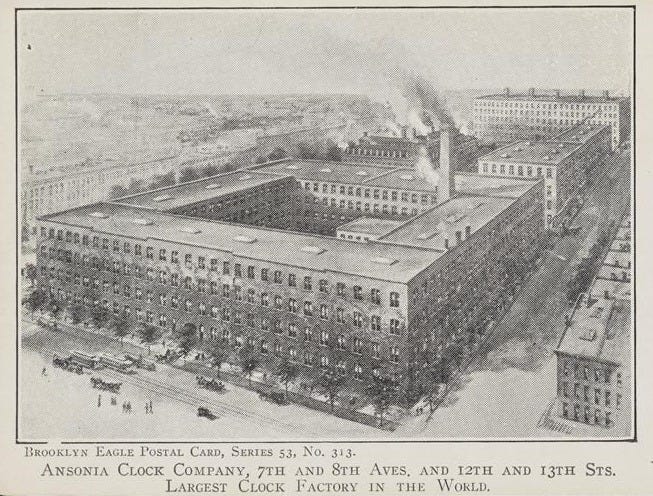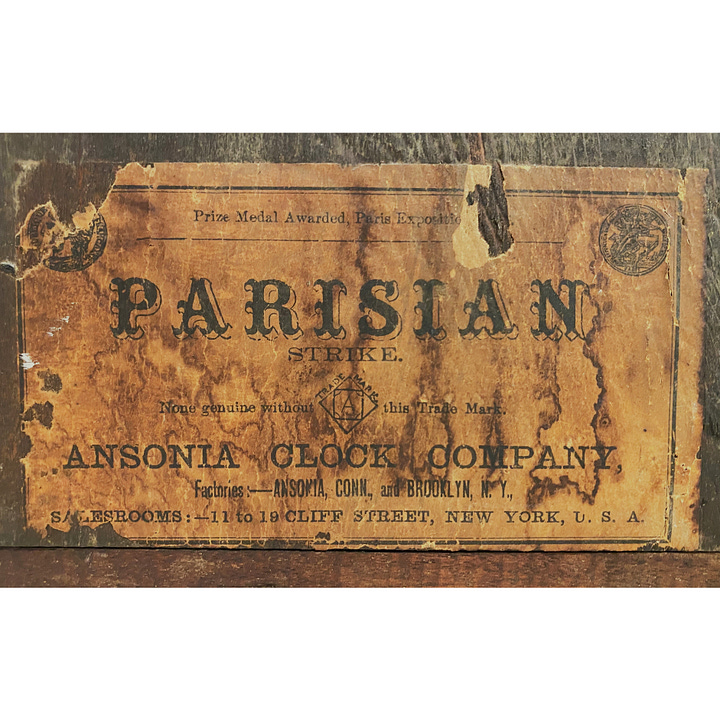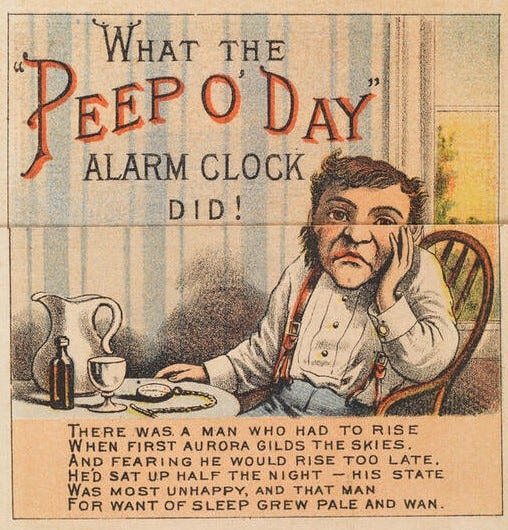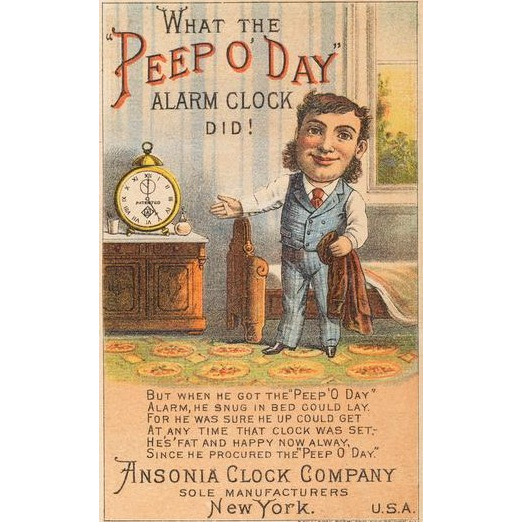Park Slope’s Hidden History: The Ansonia Clock Factory
The neighborhood was once home to the largest clock factory in the world
Morgan DeMartis is a native New Yorker with a passion for uncovering pieces of New York City history that are often hidden in plain sight. If you have a tip or story that you’d like Morgan to research, contact info@parkslopeliving.com or submit a tip here.
Follow Morgan at https://substack.com/@nychiddenhistory

When my grandmother was a child growing up in rural Sicily she loved to lie on the carpet in her grandmother’s living room beneath an ornate clock. She enjoyed listening to the clock’s chimes mark each passing hour, and she can recall those peaceful moments with vivid detail to this day. When my grandmother immigrated to New York in August 1954 she was heartbroken to have to leave the clock behind. What my grandmother didn’t know was that the clock had already made its way across the Atlantic once before. My great-great grandmother’s clock was created just a few blocks away from where I now live in Park Slope at the Ansonia Clock Factory.


In 1851 the Ansonia Clock Company was founded in Ansonia, Connecticut by metal dealer Anson Greene Phelps and clockmakers Theodore Terry and Franklin C. Andrews. Phelps expanded into the clock making business after he established his brass company in the 1840s. The clock company was so successful that just two years later Ansonia cast iron cased clocks were showcased at the 1853 New York World's Fair. In the 1870s a disastrous fire ruined the Connecticut factory which led the Ansonia Clock Company to expand into New York City. In 1878, Thomas Edison visited the company’s small New York factories to conduct experiments. Edison attempted to combine Ansonia clocks with his newly developed phonograph, which ultimately proved unsuccessful.
By 1879 the clock company laid the groundwork to consolidate their New York City operations into one large factory. They purchased land in Park Slope that encompassed the entire block from 7th Avenue and 12th Street to 8th Avenue and 13th Street. The company paid $33,000 for the land and $100,000 to build the factory which is equivalent to roughly $1 million and $3.2 million dollars today. Construction began in February 1879 and was completed on June 1. The building was heated by steam and lit by gas that was manufactured on the premises. Many varieties of clocks were made, from the cheapest at 75 cents (roughly $24 today) to the most expensive at $2,000 (roughly $63,000 today).
On June 28, 1879 the Brooklyn Union newspaper featured an article about this “valuable addition to Brooklyn” and gave a warm welcome to Park Slope’s newest business:
“These new works will give a great impetus to the real estate located on the slope which bounds the westerly side of Prospect Park. The people of Brooklyn extend to them a sincere welcome, and we hope their employees, in their leisure hours, will be able to enjoy the beauties of Prospect Park and the beach at Coney Island. The land upon which this factory is located has been greatly praised for its adaptability for residential purposes, and it has been said that in time it would be covered with palatial residences, and that the low land on Fourth and Third avenues would be taken up by manufacturing establishments. But the Ansonia Company have run up a factory of large proportions on high ground, so that those who enter the port of New York by the bay may see its huge dimensions. May it stand there for ages as a real representation of industry, enterprise, and thrift.”


Unfortunately for the Ansonia Company, this magnificent factory burned down over a year later in October 1880. A fire broke out in the gas room which leveled the building in about two hours. The loss was reported to be about $750,000 (~$23 million) with only $395,000 (~$12 million) of that sum insured. Fortunately there were no casualties, but 1,200 people were left unemployed and many locals worried that the factory would not reopen. The Brooklyn Eagle voiced the community’s concern in an article from October 27th:
~~ Subscribe to Park Slope Pulse to read how the factory rebuilt and reshaped the neighborhood, and why it ultimately closed down. Plus, watch a video of the author’s heirloom clock and listen to it chime today ~~
Keep reading with a 7-day free trial
Subscribe to Park Slope Pulse (by Park Slope Living) to keep reading this post and get 7 days of free access to the full post archives.

